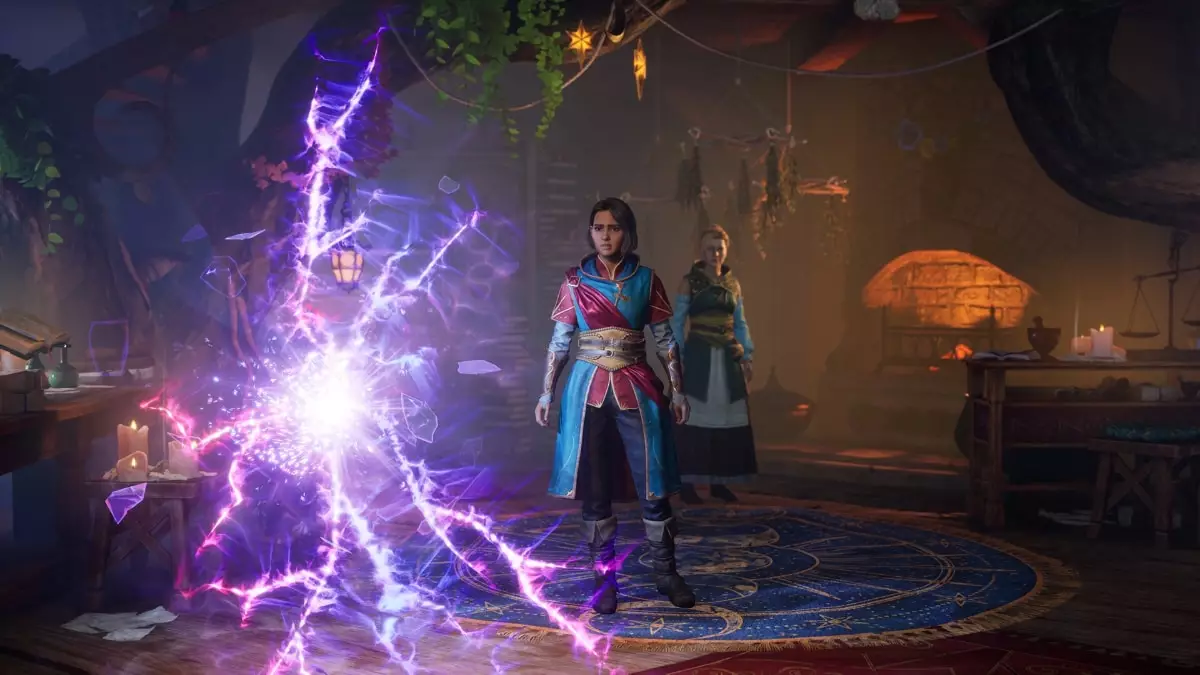When Electronic Arts announced that players on the original Nintendo Switch would be able to join in on the excitement of the upcoming game Split Fiction via GameShare, there was an audible buzz of enthusiasm across the gaming community. The promise of connectivity between two generations of consoles seems like a bold step toward inclusivity and shared experience. However, upon closer examination, the details surrounding this feature seem less groundbreaking and more like a marketing tactic aimed at capitalizing on nostalgia while neglecting the technicalities that make such features truly beneficial and feasible.
EA’s announcement about Split Fiction, which is set to launch on June 5 for the Nintendo Switch 2, painted an optimistic picture of gaming camaraderie among friends, regardless of which system they own. Players are drawn in by the allure of playing Hazelight’s acclaimed co-op title using a single copy over a wireless connection, thus inviting an old friend to join them in a new gaming experience. On paper, this sounds fantastic—a sparkling intersection of community spirit and technological innovation. But the delivery and execution of these promises remains questionable, raising concerns about whether this excitement is more illusion than reality.
GameShare: A Complicated Alliance
GameShare, in principle, should function as a bridge that connects the two different consoles and promotes collaborative gaming. However, the reality is much murkier. Despite the enticing prospect of sharing games, the glaring inconsistency in EA’s messaging poses a dilemma. EA confirmed that Split Fiction allows players on the original Switch to join in with a Switch 2 user; however, this seems to contradict earlier statements regarding exclusivity to the Switch 2. Such conflicting claims may leave players confused about the real capabilities of their systems and the limitations imposed by each console.
Moreover, the fine print disclosed by Nintendo raises significant questions regarding the practicality of this feature. According to Nintendo’s guidelines, only certain Switch 1-compatible games are eligible for GameShare on its successor. This would suggest that many games simply cannot be shared across the platforms, potentially diminishing the promised benefits of the feature. When the landscape of gaming increasingly demands seamless and cohesive experiences, these kinds of technical hurdles become a glaring hindrance rather than an enticing feature.
The Implications of Friend’s Pass and Cross Play
In addition to GameShare, the inclusion of Friend’s Pass and cross-play capabilities promises to heighten the appeal of Split Fiction. Friend’s Pass allows players to engage in cooperative gameplay without both needing to own the game, which is a welcome gesture in an age where digital ownership is often a contentious topic. Coupled with cross-play across various platforms like PC, PS5, and Xbox Series S/X, this feature could foster community and break down walls that divide gamers.
Yet, the fundamental question remains: will these innovations truly create a sense of belonging and collaboration, or will they simply become another layer of complexity in an already convoluted gaming experience? Many gamers are looking for simplicity and consistency, and adding excessive features can sometimes lead to confusion rather than clarity. In an ecosystem saturated with titles, each vying for attention, the utility of these capabilities should not be underestimated.
Anticipation vs. Reality
With pre-orders for Split Fiction beginning on April 24 and a competitive price tag of $49.99, expectations are certainly high. However, this anticipation carries with it a certain skepticism. Will the GameShare feature be easily navigable? Will players feel left out if they don’t own the latest console? The enthusiasm unleashed by such announcements can often crash against the wall of real-world limitations.
As we approach the anticipated launch date, it’s vital that EA and Nintendo address these concerns proactively. Transparency and clarity surrounding these features will not only contribute to a smoother gaming experience but will also help restore consumer trust in their messaging. Engaging with the community to ensure that expectations align with reality is critical in an age where gamers crave authenticity and connection rather than the fleeting allure of hype. The gaming landscape deserves more than just promises; it deserves a genuine commitment to delivering on them.

Leave a Reply